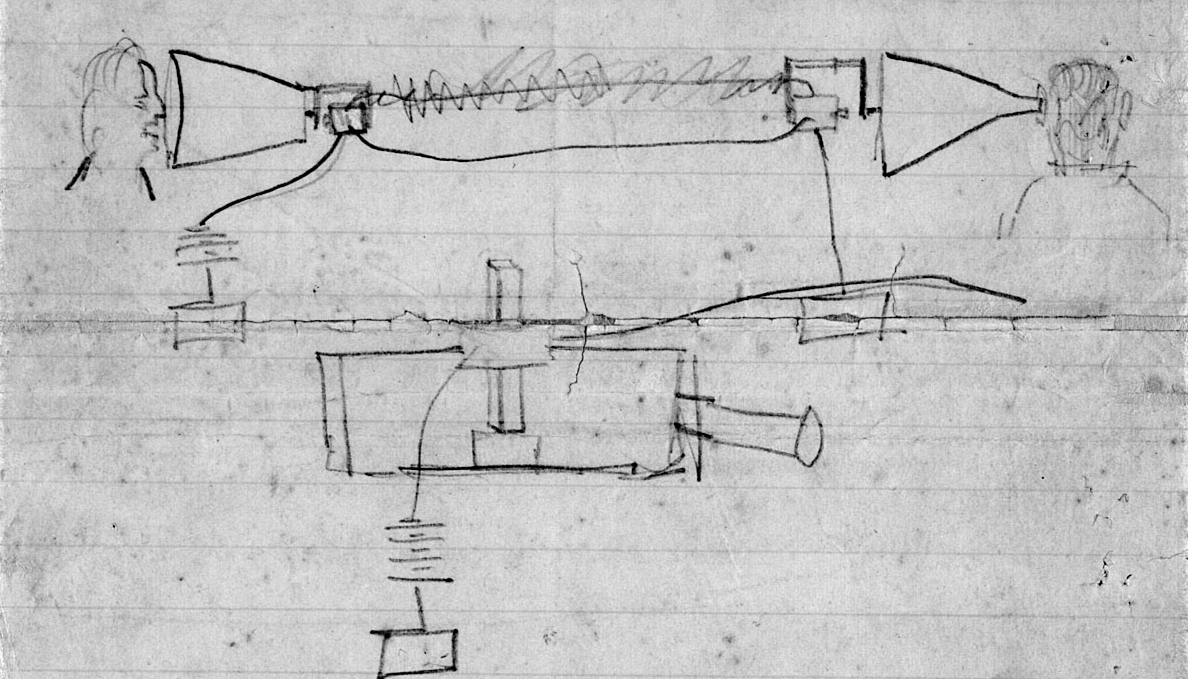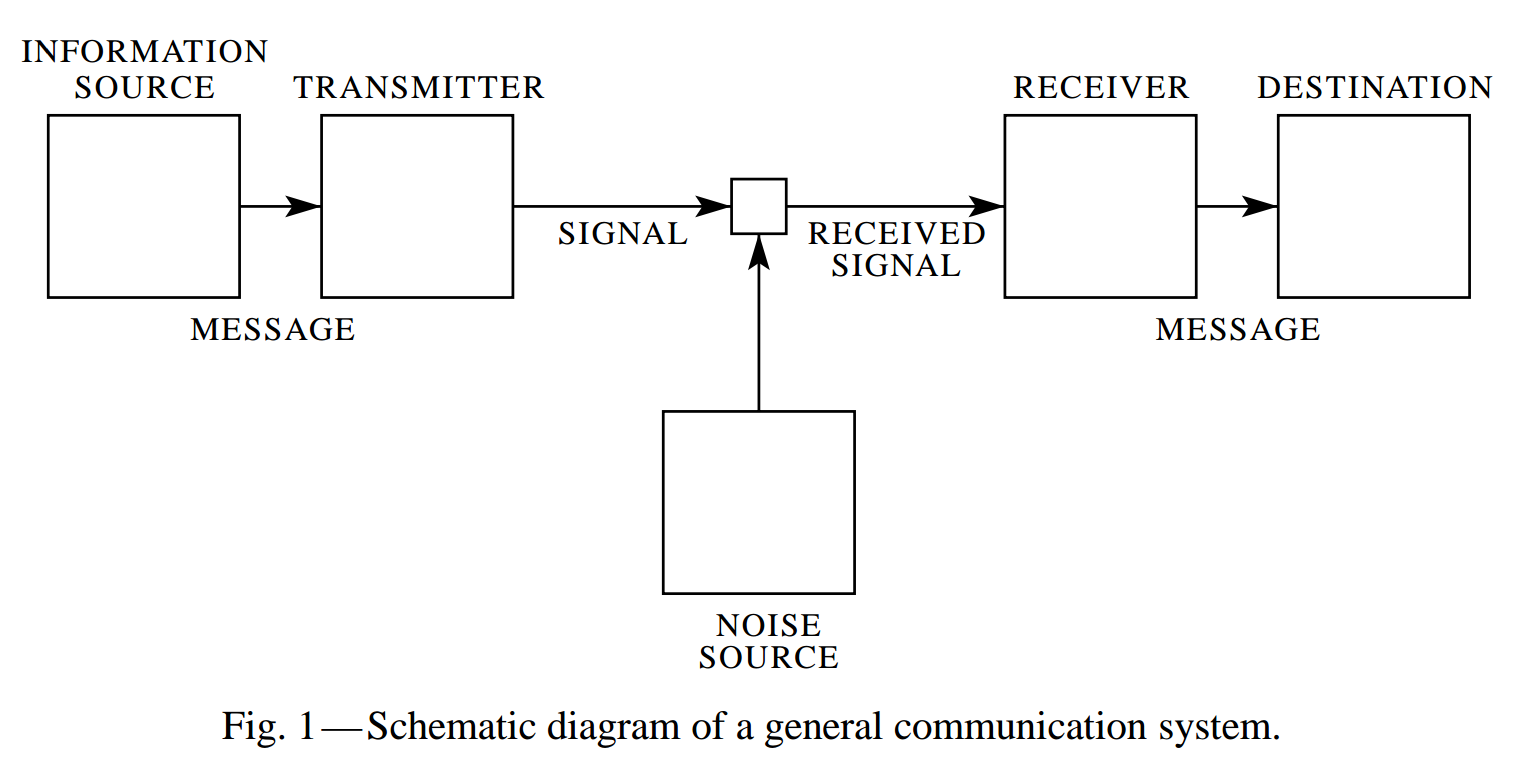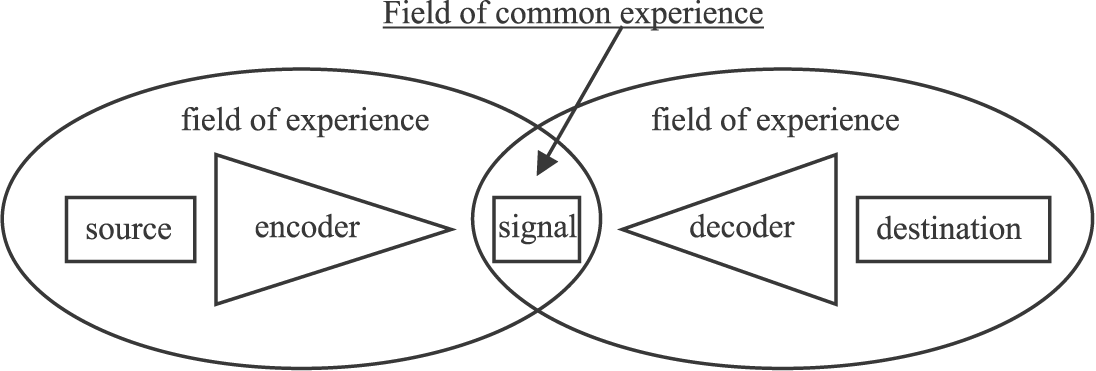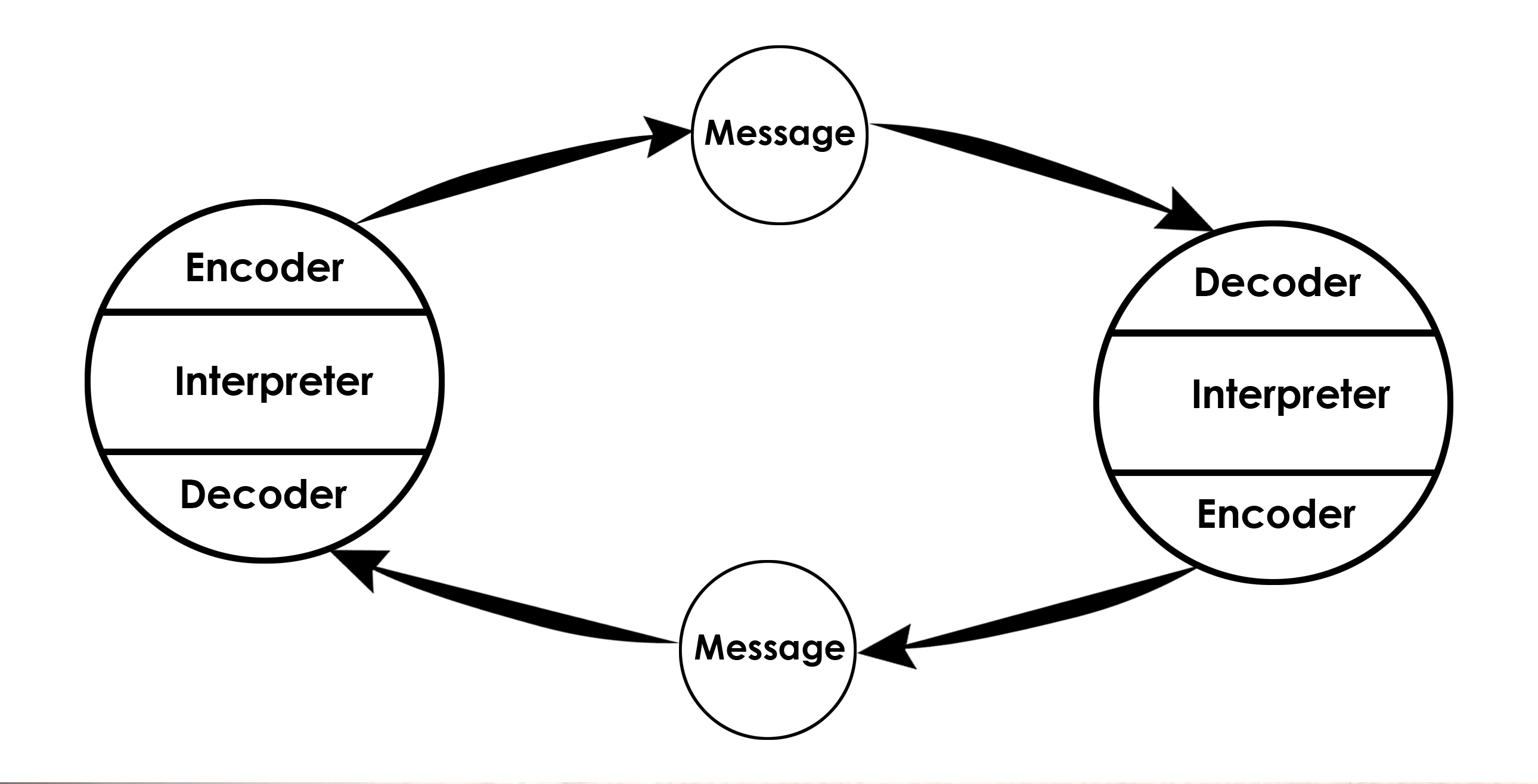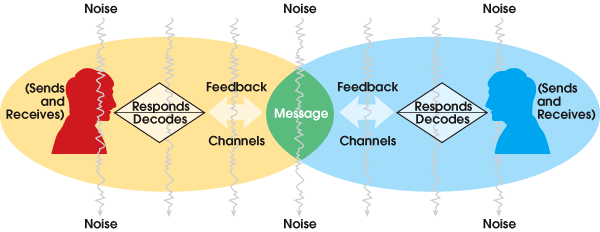Process Models of Communication
Historically Significant Models of the Communication Process
Aristotle, circa 300 BCE
Alexander Graham Bell
Claude E. Shannon, 1948
Harold D. Lasswell, 1948
- Who
- Says What
- In Which Channel
- To Whom
- With What Effect 4
Wilbur Schramm, 1954
Osgood & Schramm, 1954
David Berlo, 1960
Dean Barnlund, 1970
- Image retrieved from https://www.communicationtheory.org/aristotle%E2%80%99s-communication-model/ ^
- Bell Family Papers, Library of Congress. Retrieved from http://memory.loc.gov/mss/mcc/004/0001.jpg ^
- Shannon, C. E. (1948) A Mathematical Theory of Communication, The Bell System Technical Journal, 27, 379–423, 623–646. https://doi.org/10.1002/j.1538-7305.1948.tb01338.x ^
- Laswell, H. (1948). The structure and function of communication in society. In L. Bryson (Ed.), The communication of ideas. New York: Harper. ^
- Schramm, W. (1954). The process and effects of mass communication. Urbana, IL: University of Illinois Press. ^
- Schramm, W. (1954). The process and effects of mass communication. Urbana, IL: University of Illinois Press. ^
- Berlo, D. (1960). The process of communication: An introduction to theory and practice. New York: Holt, Rinehart and Winston. ^
- Barnlund, D. (1970). A transactional model of communication. In K. K. Sereno & C. D. Mortensen (Eds.), Foundations of communication theory, 83-102. New York: Harper. ^

